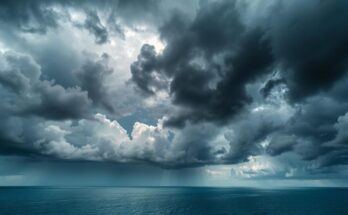Tropical Cyclone Zelia was reported with sustained winds of 58 mph in the Indian Ocean. Satellite imagery is utilized to assess storm strength and structure. Cyclones in the Southern Hemisphere differ from hurricanes in the Northern Hemisphere in terms of rotation and naming conventions. The cyclone season typically runs from late October to May, with peak activity from late February to early March.
Tropical Cyclone Zelia was reported in the Indian Ocean early Wednesday Australian Western Time, according to the Joint Typhoon Warning Center’s latest advisory. The cyclone exhibited sustained wind speeds reaching 58 miles per hour. Regulation of such storms involves monitoring via satellite imagery, which provides insights into their strength, size, and structural cohesion. A symmetric eye formation in the storm usually indicates limited interference from external forces that could diminish its intensity.
It is noteworthy that only a quarter of the world’s tropical cyclones develop in the Southern Hemisphere. When these storms possess sustained winds of 74 miles per hour or higher, they are designated as cyclones rather than hurricanes, as is the case in the Atlantic region. Furthermore, cyclones in the Southern Hemisphere rotate in a clockwise direction, contrasting with the counterclockwise rotation observed in hurricanes.
Regions susceptible to cyclones include eastern Africa, mainly Madagascar, as well as the western, northern, and eastern coasts of Australia and adjacent island nations. The cyclone season in this hemisphere operates opposite to that of the rest of the world, typically commencing in late October and extending until May. Generally, peak cyclone activity occurs in late February and early March, although this can vary by specific region.
In summary, Tropical Cyclone Zelia represents a significant meteorological event in the Indian Ocean, characterized by its observed wind speeds and structural features. The understanding of cyclones in the Southern Hemisphere is crucial, especially regarding their formation, naming conventions, and geographical impact. Awareness of cyclone seasons is vital for preparedness in affected regions.
Original Source: www.nytimes.com




